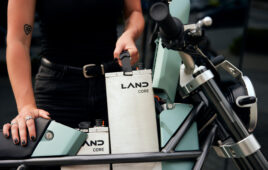A change is coming to fasteners spurred by the needs to lower automotive recall and warranty costs, reduce weight and environmental impact, and raise fuel efficiency numbers. A new report, which profiles Emhart Teknologies and other industry leaders, forecasts a growing automotive fastener market to reach $12.2 billion by 2012.
Fastener failure is one of the leading causes of vehicle recall in North America and Europe. The typical threaded joint, produced by a standard nut and bolt, has existed since the 19th century. When a fastener loses its clamp load, it no longer does its job and safety, recall, or warranty issues occur. Locking devices from wires and washers to chemical and drypatch adhesives are commonly added to retain clamp load. These methods do not always hold up under shock, vibration, or temperature extremes.
Among the automotive alternatives (hybrid, all-electric, and so on) clean diesel puts added strain on fasteners due to its added torque in the drivetrain and added heat and vibration in the turbocharged powertrain and chassis.
To assure joint integrity in these critical areas while preventing safety, warranty, or recall issues, automotive engineers are turning to an innovative fastener called Spiralock.

Traditional locking fasteners do not address a basic design problem with the standard 60-degree thread form: that the gap between the crest of the male and female threads can lead to vibration-induced thread loosening. Stress concentration and fatigue at the first few engaged threads is also a problem, along with an increased probability of shear, especially in soft metals, due to itstendency toward axial loading. Temperature extremes can also expand or contract surfaces and materials, potentially compromising joint integrity.
The Spiralock locking fastener has a re-engineered thread form that adds a 30-degree wedge ramp at the root of the thread which mates with standard 60-degree male thread fasteners.
The wedge ramp allows the bolt to spin freely relative to female threads until clamp load is applied. The crests of the standard male thread form are then drawn tightly against the wedge ramp, eliminating radial clearances and creating a continuous spiral line contact along the entire length of the thread engagement. This continuous line contact spreads the clamp force more evenly over all engaged threads, improving resistance to vibration loosening, axial-torsion loading, joint fatigue, and temperature extremes.
The Spiralock locking fastener has been validated in published test studies at leading institutions including MIT, the Goddard Space Flight Center, Lawrence Livermore National Laboratory, and British Aerospace. It has been used in extreme fastening applications with virtually no chance of recall: from the main engines of NASA’s Space Shuttle; to the Saturn Cassini orbiter and Titan Huygens probe; to medical implants, artificial limbs, and heart pumps.
The fastener’s full contact along the entire engaged length of the thread reduces thread galling, or microwelding, especially in the heat-resistant nickel alloys. Fasteners can be reused up to 50 times, simplifying installation and maintenance. And it makes the thread form self-centering, which eases the balancing of high RPM diesel and turbo systems.
Emhart Teknologies
www.spiralock.com
::Design World::
Filed Under: Automotive, Collars • locking devices, Green engineering • renewable energy • sustainability, FASTENING • JOINING • locks • latches • pins, Off highway • construction • agriculture





Tell Us What You Think!